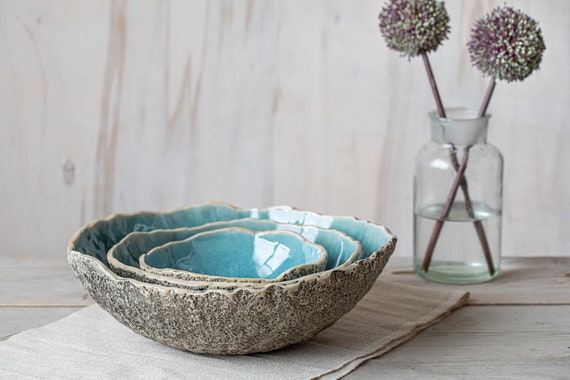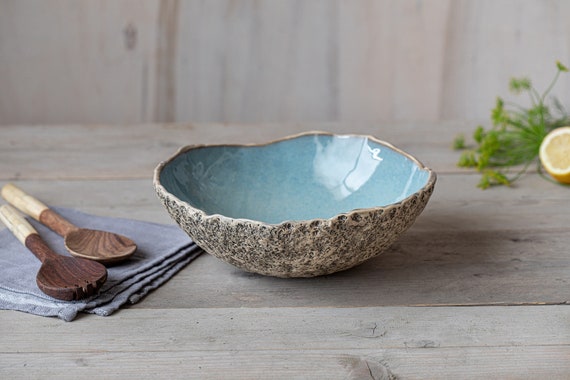Decorative ceramic bowls have long been a favorite among collectors, interior designers, and homemakers alike. Their blend of function and artistry makes them a stunning addition to any room. In this comprehensive guide, we will explore the history, styles, materials, and best practices for incorporating decorative ceramic bowls into your home. Let’s dive in!
Table of Contents
- 1. The History of Decorative Ceramic Bowls
- 2. Types of Decorative Ceramic Bowls
- 3. The Functionality of Decorative Ceramic Bowls
- 4. Decorating with Ceramic Bowls
- A. Using Bowls in Table Settings
- B. Displaying on Mantels and Shelves
- C. Ceramic Bowls in Bathroom Decor
- 5. Caring for Decorative Ceramic Bowls
- 6. Pros and Cons of Decorative Ceramic Bowls
- 7. Comparison of Popular Ceramic Bowl Types
- 8. Frequently Asked Questions
1. The History of Decorative Ceramic Bowls
The use of ceramic bowls dates back to ancient civilizations, from the Egyptians to the Chinese. Each culture brought its unique touch to the craft, often using locally sourced clay and traditional firing methods. Over the years, decorative ceramic bowls evolved from purely functional items to works of art.
For instance, in ancient China, blue-and-white porcelain bowls became highly prized during the Ming Dynasty, symbolizing wealth and sophistication. Today, ceramic bowls are manufactured with a wide range of techniques and styles, showcasing various traditions and modern innovations.
2. Types of Decorative Ceramic Bowls
When it comes to decorative ceramic bowls, the options are vast. Understanding the differences can help you make a more informed choice for your home.

A. Handmade vs. Mass-Produced
Handmade ceramic bowls often feature unique designs and craftsmanship that tell a story. Each piece is distinct, which adds a personal touch to your decor.
Pros and Cons of Handmade Bowls
| Pros | Cons |
|---|---|
| Unique designs | Higher price point |
| Supports local artisans | May require more care |

In contrast, mass-produced ceramic bowls are more affordable and widely available, but they may lack character and individuality.
B. Different Styles and Designs
Here are some popular styles of decorative ceramic bowls:

- Traditional: These bowls often feature intricate patterns and historical motifs.
- Modern: Clean lines and minimalistic designs characterize modern ceramic bowls.
- Rustic: Often unglazed or featuring earthy tones, rustic bowls add a charming touch.
- Artisan: Vibrant colors and abstract designs mark artisan bowls, making them true statement pieces.
3. The Functionality of Decorative Ceramic Bowls
While decorative ceramic bowls are visually appealing, they are also functional. They can be used for serving, storage, or simply as decorative pieces that elevate the aesthetics of your space.

4. Decorating with Ceramic Bowls
Incorporating decorative ceramic bowls into your decor can enhance the overall ambiance of your home. Here are some practical ideas for styling these beautiful items.
A. Using Bowls in Table Settings
Decorative ceramic bowls can transform your dining table into an inviting space. Use a large bowl as a centerpiece filled with fruits or seasonal decor. Smaller bowls can double as individual serving dishes.

B. Displaying on Mantels and Shelves
Position bowls on mantels or shelves to create visual interest. Pair them with books and other decorative items to achieve a well-curated look.
C. Ceramic Bowls in Bathroom Decor
In the bathroom, decorative ceramic bowls can be used to hold toiletries, decorative stones, or even scented candles, making your space feel more serene and stylish.

5. Caring for Decorative Ceramic Bowls
To maintain the beauty of your decorative ceramic bowls, here are some essential care tips:
- Hand wash with mild soap and avoid abrasive cleaners.
- Dry immediately to prevent water spots.
- Store in a safe place to avoid chipping or breaking.
6. Pros and Cons of Decorative Ceramic Bowls
| Pros | Cons |
|---|---|
| Beautiful and versatile | Can be fragile |
| Wide variety of styles | May require special care |

7. Comparison of Popular Ceramic Bowl Types
Here’s a quick comparison of some popular types of decorative ceramic bowls based on style, use, and price:
| Type | Style | Typical Use | Price Range |
|---|---|---|---|
| Handmade Pottery | Artisan | Serving & Display | $30 – $200 |
| Porcelain | Traditional | Table Settings | $15 – $100 |
| Stoneware | Rustic | Everyday Use | $10 – $75 |
| Earthenware | Country | Decorative | $5 – $50 |
8. Frequently Asked Questions
What is a decorative ceramic bowl typically made of?
Decorative ceramic bowls are usually made from clay, which is shaped and fired in a kiln. Depending on the type, they can be made from earthenware, stoneware, or porcelain.
Can decorative ceramic bowls be used for food?
Yes, many decorative ceramic bowls are safe for food, especially those labeled as food-safe. However, you should check the manufacturer’s instructions, as some may be intended solely for decorative purposes.
How do I choose the right decorative ceramic bowl for my home?
Consider the style of your space, the intended use of the bowl, and your budget. Think about how the bowl will complement your existing decor.
Are decorative ceramic bowls dishwasher safe?
While some ceramic bowls are dishwasher safe, it’s best to hand wash them to preserve their finish. Always refer to the manufacturer’s care instructions.
Where can I buy decorative ceramic bowls?
Decorative ceramic bowls are available at a variety of places including local artisan shops, home decor stores, online marketplaces, and craft fairs.
How do I style decorative ceramic bowls in my home?
You can use them as centerpieces, mix and match various sizes and colors, or place them on shelves alongside other decorative items for a curated look.
Decorative ceramic bowls are not just practical items; they are pieces of art that can enhance the beauty of your home. Whether you choose a handmade bowl that tells a story or a modern piece that adds a pop of color, these bowls are sure to bring a touch of elegance to your decor. Happy decorating!